Miguel de Cervantes

Where are the Cervantes pilgrimage sites? Start with Esquivias, Sevilla, Valladolid, and Madrid. Cervantes was born in Alcalá de Henares, near Madrid, in 1547, but his family moved away when he was very young.
Esquivias is a small town off the A-42 from Madrid to Toledo. It is where Cervantes married Catalina de Salazar y Palacios in 1584. The house shown below is where he lived with her - it belonged to her family - when he was in town. Since 1994 it has been the Museo Casa de Cervantes and it is open to the public. Many websites give the wrong location - the house is actually where la calle Doña Catalina and la calle de San Roque intersect, a block west of the central plaza.
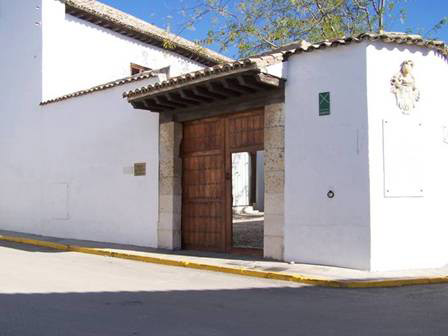
In Sevilla, Cervantes spent time in the 1590's in the Royal Prison on la calle Entrecárceles, so named because it was between two prisons. The Royal Prison no longer exists and there is a bank there now. But you can see this statue (below) from 1974 in front of it. The statue is by Sebastián Santos Rojas.
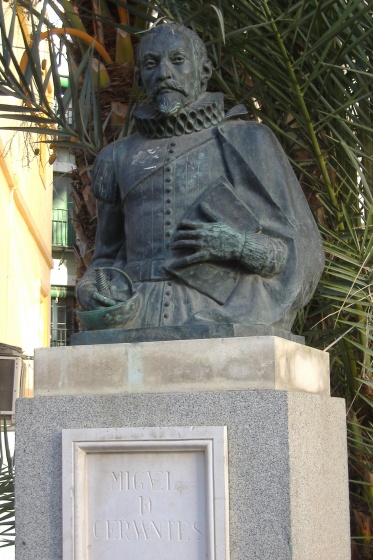
One of the western suburbs of Sevilla is Castilleja de la Cuesta, where Hernán Cortés died in 1547 at the age of 62 - he was buried eventually in Mexico City. The legendary Don Juan was from Sevilla too and he has his own monument at the Plaza Refinadores...
Cervantes also spent time in jail in Argamasilla de Alba, in la Mancha, and refers to it in the Prologue to Don Quixote. There is a "cave" there that may or may not have been where the sorrowful wandering knight was imprisoned. A better site to visit may be the windmills (Molinos de Viento) at Campo de Criptana, which are now an outdoor museum:
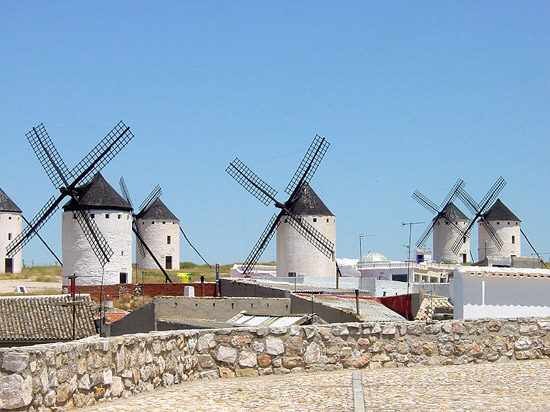
In 1605, when Don Quixote was first published, Cervantes and family lived in Valladolid, following the court. The house is in la calle del Rastro and it is now a museum, El Museo Casa de Cervantes. Cervantes' time here included testifying in court after a man was murdered outside in the street. The courts took a dim view of the Cervantes women at the time and Cervantes and various family members ended up briefly in prison again until they were exonerated.
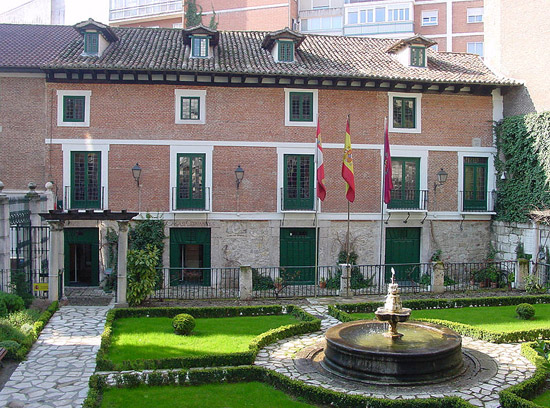
In Madrid during the last decade of his life, Cervantes lived in multiple houses in and around the literary quarter, El barrio de las Letras. We know where he died - at a house on la calle de Cervantes (it wasn't known by that name at the time) near the corner of la calle del León. The house was torn down in 1833 and all that survives is the plaque below, stranded and barely noticed above a doorway on the new building. Such is our fate.
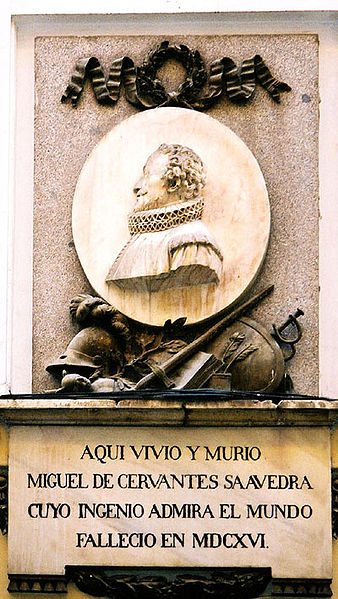
Cervantes died unnoticed in 1616 and was quickly forgotten. He was buried a block away by the Franciscans in the Convento de las Trinitarias Descalzas (Barefoot Trinitarians) de San Ildefonso (shown up top), on calle de Lope de Vega. It was built a few years earlier in 1612 and it's still an active convent. His daughter lived there as a nun and his wife also would be buried there. It seems one reason he chose to be buried there was the Trinitarians had helped with his ransom from Algiers many decades earlier. However, in keeping with his stories, his remains were later lost and, while they were thought to be there somewhere, no one knew for sure where. Infrared cameras, 3D scanners and ground penetrating radar have turned up some badly damaged bones and in March 2015, researchers announced that Cervantes' remains were probably among them. "His end was that of a poor man. A veteran with his battle wounds," said a spokesman for the Madrid City Council.
